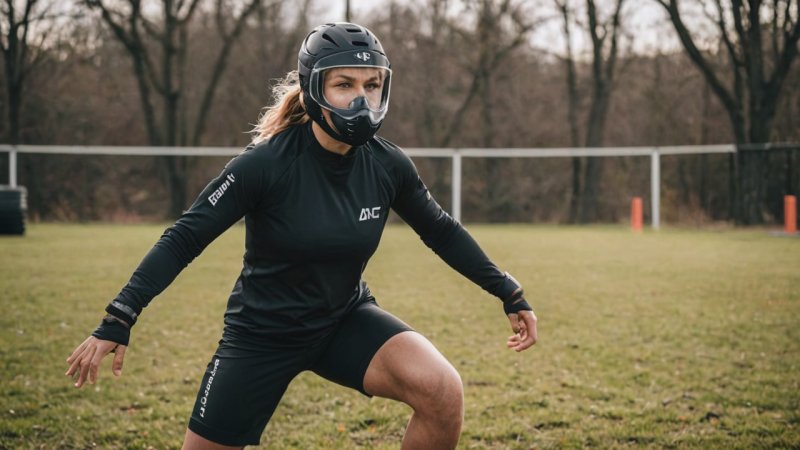Setting realistic training goals is a vital component for any athlete, whether you're a seasoned professional or just starting your journey in sports. Achieving optimal performance while ensuring safety is a delicate balance that requires thoughtful planning and self-awareness. Goals that are too ambitious can lead to frustration and injury, while goals that are too easy might not push you to reach your full potential. In this article, we will explore how to set achievable training goals that not only enhance your performance but also keep safety at the forefront of your athletic endeavors.
Understanding Your Sport
Before diving into goal setting, it’s critical to have a comprehensive understanding of your specific sport. Each sport has its unique demands and challenges, which can significantly influence your training regimen. Take the time to analyze the key skills, endurance requirements, and physical attributes necessary for success in your chosen field. For example:
- Cycling: Focus on endurance, leg strength, and cardiovascular fitness.
- Motorsports: Emphasize reflexes, mental agility, and hand-eye coordination.
- Football: Highlight strength, speed, and tactical awareness.
- Winter Sports: Prioritize balance, agility, and core strength.
- Outdoor Activities: Concentrate on endurance, resilience, and adaptability.
SMART Goals Framework
One effective method for setting realistic training goals is the SMART criteria, which stands for Specific, Measurable, Achievable, Relevant, and Time-bound. This framework can help you structure your goals in a way that maximizes clarity and focus.
Specific
Your goal should be clear and specific. Instead of saying, "I want to get better at cycling," specify how you intend to improve. For instance, "I want to increase my average speed from 15 mph to 18 mph on a 20-mile ride."
Measurable
Ensure that your goal is measurable, allowing you to track your progress. Continuing with the cycling example, you can measure your speed through GPS devices or cycling apps that record your performance metrics.
Achievable
While ambition is commendable, your goals need to be achievable based on your current fitness level and experience. Setting a goal to complete a 100-mile ride in the next week may not be realistic if you have not already been riding consistently. Consider your current conditioning and set gradual goals to build up to larger achievements.
Relevant
Your goals should align with your overall athletic aspirations. If you’re training for an upcoming marathon, setting a goal to run a half-marathon can be a relevant step toward that larger objective.
Time-bound
Finally, make your goals time-bound. Establish a timeline for when you want to achieve your objectives. This could look like, "I aim to reach my desired speed within three months."
Incorporating Safety Measures
As you set your training goals, integrating safety measures is crucial. This means not only being aware of your physical limitations but also ensuring that your training environment is safe. Here are some safety tips that should accompany your training objectives:
- Proper Gear: Always wear appropriate protective gear relevant to your sport. For cyclists, this means a well-fitted helmet and reflective clothing; for football players, it includes helmets and pads.
- Warm-Up and Cool Down: Incorporate proper warm-up and cool-down routines to prevent injuries.
- Listen to Your Body: Pay attention to any signs of discomfort or fatigue. Adjust your training intensity accordingly.
- Hydration and Nutrition: Maintain proper hydration and nutrition to support your training efforts and recovery.
Review and Adjust Your Goals
As you progress, it’s essential to regularly review your goals. Life circumstances, injuries, or changes in your sport may require you to adjust your objectives. Periodically take the time to assess your performance and see if your goals still align with your current capabilities and aspirations. If you find that you’ve achieved a goal, set a new one to keep pushing your limits.
Celebrate Your Achievements
Lastly, don’t forget to celebrate your achievements, no matter how small. Recognizing your progress not only boosts motivation but also reinforces a positive mindset. Whether it’s treating yourself to a favorite meal after reaching a milestone or sharing your success with friends and family, acknowledging your hard work is important for sustained growth.
In conclusion, setting realistic training goals is an essential aspect of enhancing athletic performance while ensuring safety. By understanding the unique demands of your sport, applying the SMART goals framework, incorporating safety measures, regularly reviewing and adjusting your objectives, and celebrating your achievements, you can create a balanced training plan that promotes success and minimizes risk. Remember, the journey of an athlete is not just about the destination; it’s about the progress made along the way.






